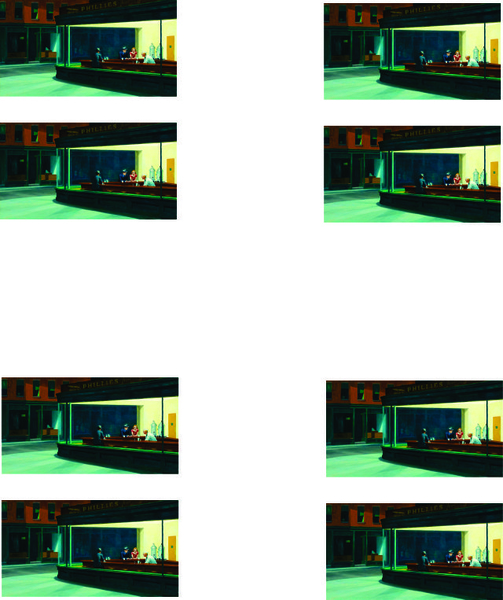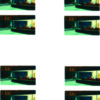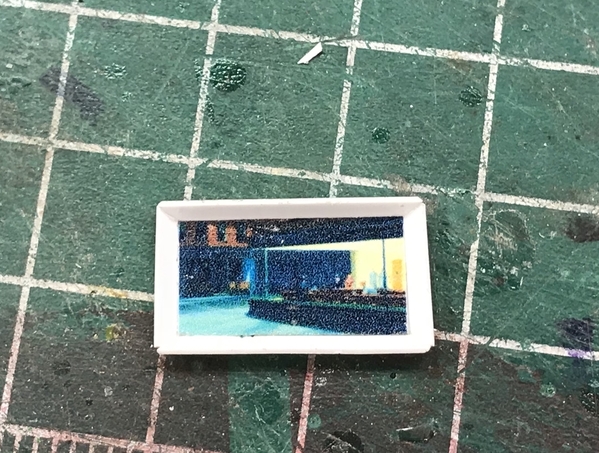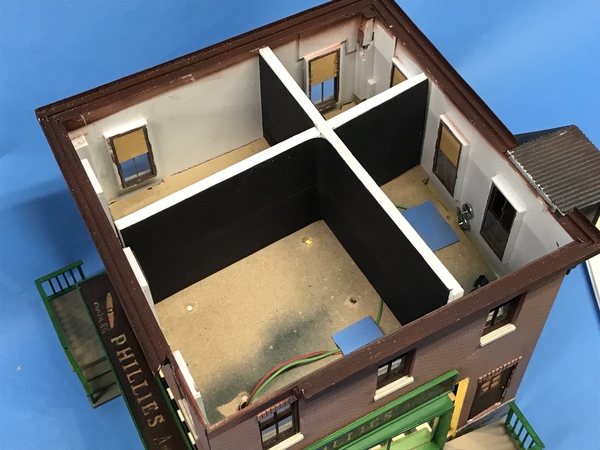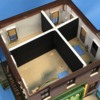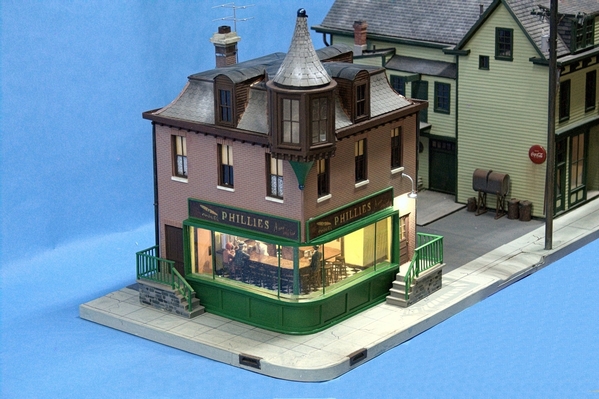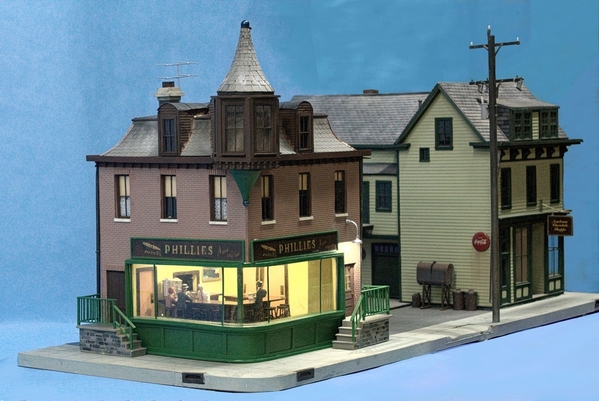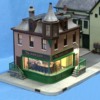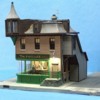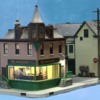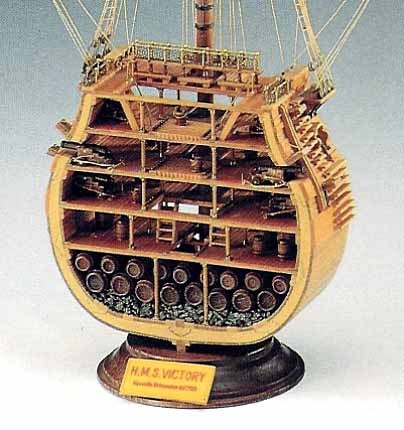Nice feedback from all y'all.
Since I'm really thinking about buying that Y6-B, I decided to clean up the shop and then get one of my other 3rd Rail monsters running after a long hiatus. I bought their Pennsy S-1 6-4-4-6 colossal Art Deco contrivance while we were living in Germany, which makes it about 18 years old already. I had three problems with it.
- I still had a rechargeable battery and need a BCR
- I couldn't stay coupled with a heavy passenger train when cresting my 2% grade
- It had nickel silver, soldered trim separated from the right side of the pilot many years ago when the pilot contacted an aluminum passenger car on the outside of a two-track curve. I had the two pieces — which were very springy — held with some twisted black iron wire.
Since this engine hadn't been on the tracks for years, I never ran it with the crossing signals in place. Very soon I found that the enormous length of the engine swung the cab to the right coming around the left front curve and it was colliding forcibly with the signal. I had to move it out almost a 1/2" to ensure it had clearance. I'm glad I hadn't finished all the landscaping around that signal...
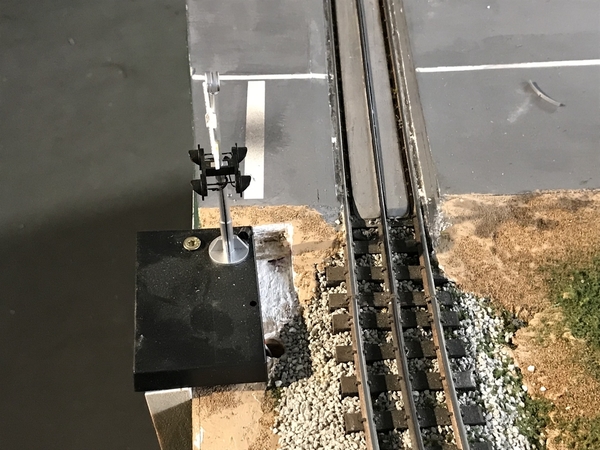
I replaced the rechargeable with my last BCR, put it on the track to get it working and nothing. Nada! Bubkis! Took the tender back to the shop and took it apart to check all the wiring. All was in order. Put it back on the track without the shell, still nothing. Tried another engine of known performance. Nothing! Ah ha! Looked over to the the control panel to see the indicator light showing whether or not the gate interlock is closed and it was red. Then I looked down at the gate and saw the latch was not seated. Problem solved! I fixed the coupler problem with some Tamiya masking tape wrapped around the tender coupler. Easy peasy. Engine fixed and ran it for quite a while and took this video.
https://www.youtube.com/watch?v=o_SzUR4-wF4
I noticed that the drivers, even on this monster heavy engine, were slipping when the full train of heavy Lionel hi-scale passenger cars (and one MTH super-dome) was fully on the 2% grade AND was on an O-96 curve coming out of the tunnel. The video clearly shows the drivers spinning faster than the train speed would indicate until the engine gets over the crest.
Now we get to the awful part.
I wanted to check the S-1's box to see if 3rd Rail included another driver axle which was fitted with traction tires to solve the spinning problem. That box was in a pile that was behind the blue cardboard backdrop that I used to shoot the distillery picture which now served as a nice vision block for my storage shelves. I was attempting to move the backdrop to the right, sliding it behind the layout on the left-most end, AND was doing this while the trains were running. I had just pulled out the S-1's box which was on the bottom of the pile, and didn't realize until it was much to late that the blue backdrop paper has separated from the cardboard backing. It was now draped over the tracks just before it enters the bridge curve and the train was highballing right into the paper! I tried in vain to pull the paper back, but the engine collided with it, derailed and promptly left the table along with the tender. Both nose-dived to the concrete right next to the ravine and ended up on the floor underneath the ravine. The next car in the train, a baggage car, ended up wedged between the back of the layout and the wall and was trapped from falling to the floor by the back L-girder.
The engine was a little banged up, but not critical, but the tender took a beating with the bulkhead that supports the drawbar, completed separated from the tender shell, and one axle freed up from the front 4-axle truck. I've success with using epoxy to put 3rd Rail structures back together after catastrophes and did the same here. In this case I used J-B Weld to hold it all together. It could be re-soldered, but that would destroy the exterior paint. J-B Weld is quite strong and should work okay. I replaced the loose axle and pressed the truck side frames closer together since they were spread from the collision which released the axle.

That leads to the nickel silver trim. Since I had to straighten the engine pilot a bit, I decided with my new-found soldering chops that I should actually re-solder those trim pieces and fix it right. I tried with my RSU, but my unit doesn't have the wattage to heat large assemblies. I then tried the Weller, turned up to 5 with the biggest tip I had, but it too did not have sufficient power. That left using a mini-torch powered by butane. That did the trick. I had used a burr to grind off the old epoxy that I had attempted to use years ago, and the old solder exposing some new brass, and then tinned the surface with new solder. Using a needle nose to hold the springy trim tight, I heated the shell from behind until the solder melted. It worked. I then clamped the now-soldered one with a hemostat so it would de-solder and did the second one. I filed off the excess and used some Tamiya filler to close those holes I drilled for that twisted wire.
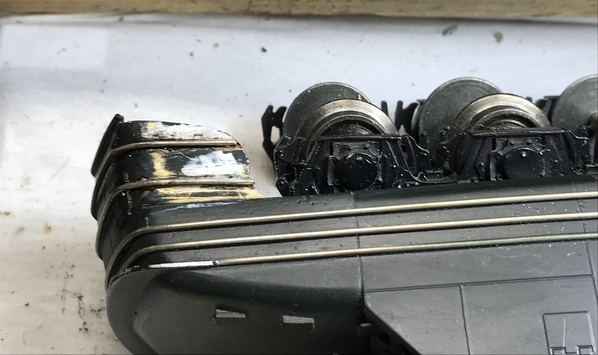
After the filler dried I mixed some Tamiya dark green and black and nailed a perfect Pennsy Brunswick Green, but the alcohol-based Tamiya acrylic reacted badly with the surface and was forming clumps. I was brush painting it. So I hand brushed some Tamiya lacquer-based primer and after it dried used the same mixture. It's not perfect, but it's pretty good. The front trim lip is part of a brass pilot casting is not nickel silver, it's silver paint and was a bit banged up, so I touched it up with the Molotow Chrome Pen. The engine is now waiting on the track for the tender fix to fully cure. The S-1 was one of the largest steam engines ever built, and was the epitome of Art Deco streamlining. Pennsy only built one, but it served as the proof-of-concept for the rigid frame, duplex divided drive that was exemplified by the subsequent development and fielding of the Q1, Q2 and T1. Both the Q2 and T1 never reached their ultimate development due to the conquest of diesel.
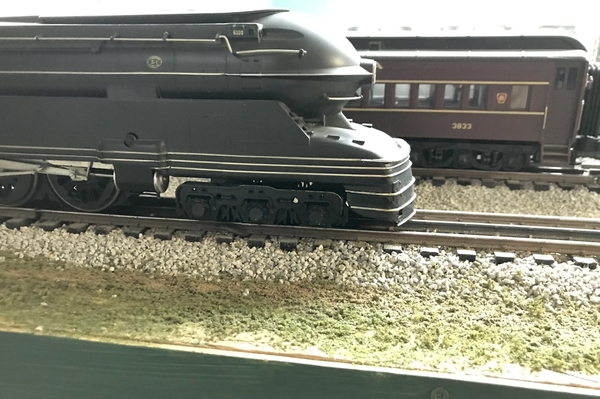
So what could have been an absolute disaster, with the wreckage of a very pretty, big brass engine, actually got me fixing that trim which needed doing for years, and it's now another engine that will get off the shelf and pull some trains. I feel much better about buying that new engine knowing that I've put an oldie, but goodie back in service.
The other point to remember is this. Brass engines, when they have big booboos, are repairable. Die cast big engines not so much. When die cast engines break, you can't solder them, and when deformed, they will probably break when you try and straighten them.
As I mentioned earlier in this post, this is not the first time I've successfully repaired a brass engine. 12 years ago, my then 2-year-old who was in my arms, reached out and grabbed my J1-a as it went roaring by. The 11 pound engine left the tracks and did another nose dive to the concrete, stopping first to hit my lower leg. The shell was separated from the frame below the cab. The Pennsy, top-mounted headlight and supporting bracket was destroyed, and the pilot and left-side ladder were deformed. I epoxied the cab support, got a new PSC investment cast headlight and straightened all the bent things. That engine still runs and looks great. And the tender coupler bracket on this S-1 is also held on by epoxy for years.
And… I should never have been messing around getting that box out of a place where trains were running nearby… unattended. I should have known better.
My next project will be very mundane and not in the least glamorous. I'm going to partially rip up the streets and "repave" them to repair the water damage. I've already pulled off the base plate for Nighthawks and Chocolate Shoppe, so I'll remove Gravely, the Fire house, Saulenas and the Sinclair Gas Station tomorrow so I can easily access the street.




